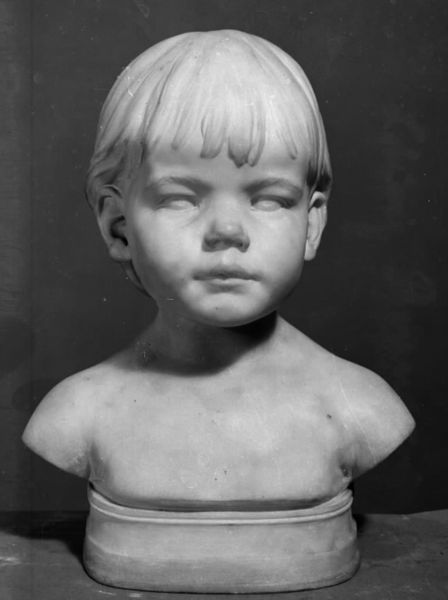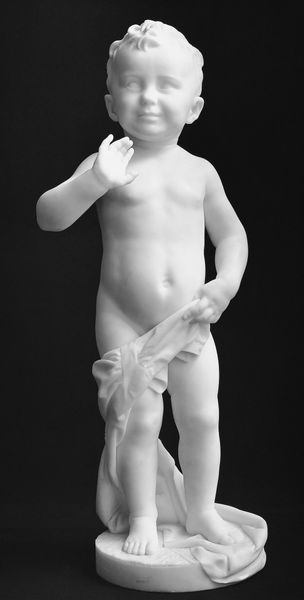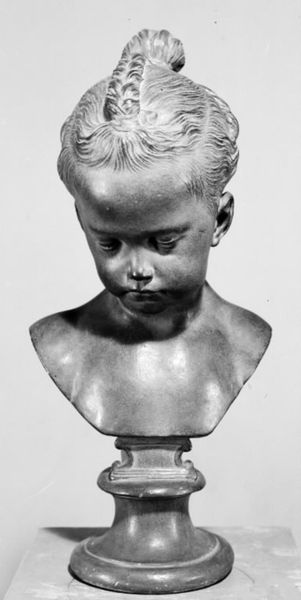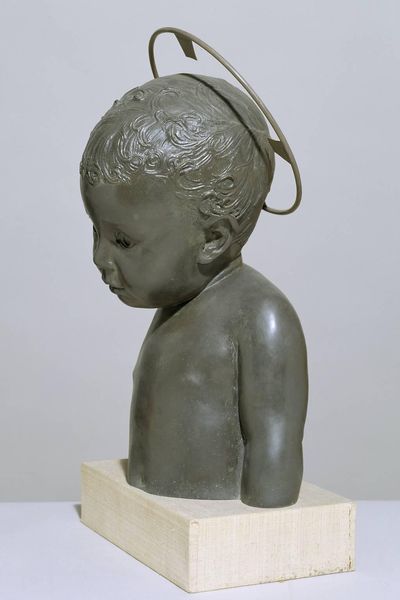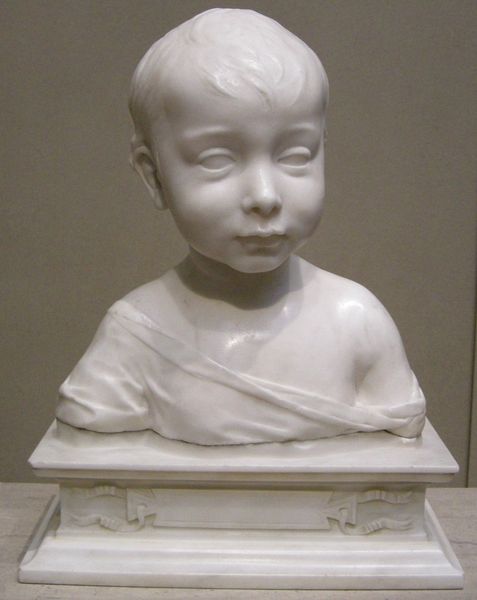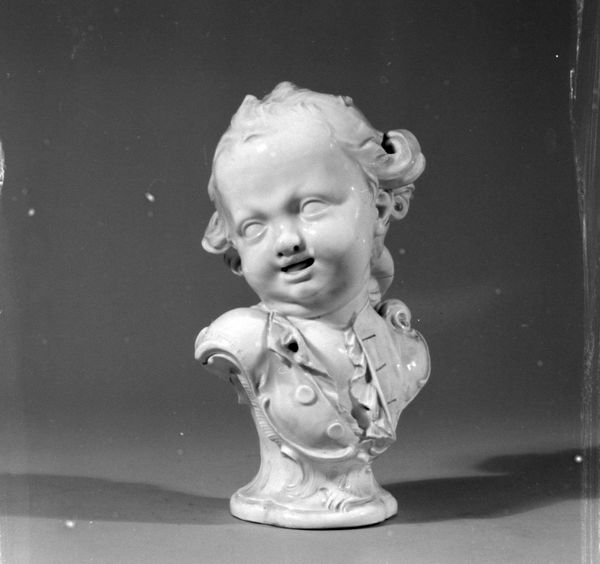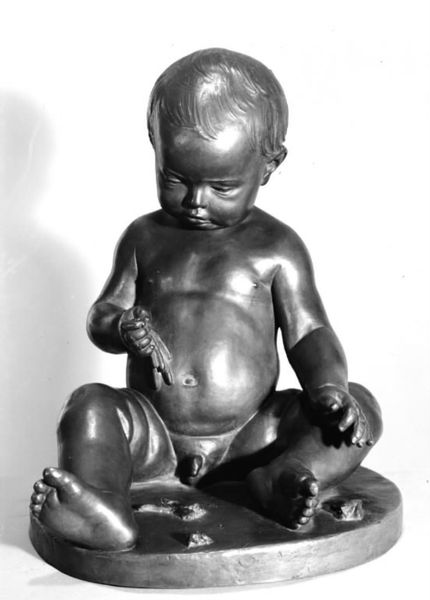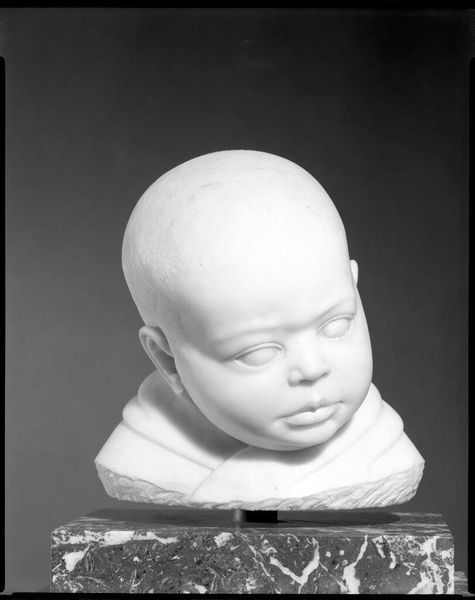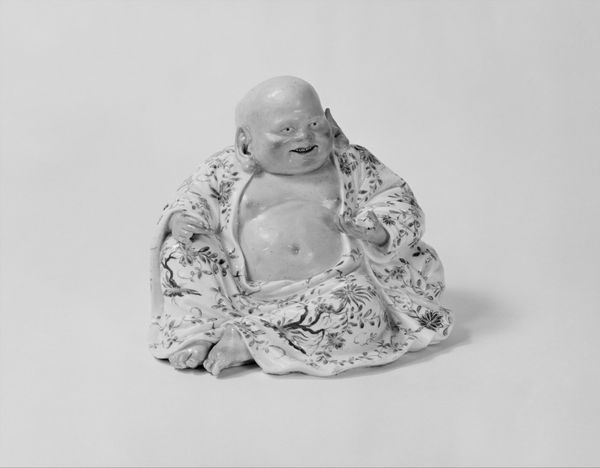
sculpture, marble
#
portrait
#
neoclassicism
#
classical-realism
#
figuration
#
sculpture
#
marble
Dimensions: 14 1/2 x 10 x 6 in. (36.8 x 25.4 x 15.2 cm)
Copyright: Public Domain
Editor: Here we have Erastus Dow Palmer’s "Infant Ceres," carved from marble between 1849 and 1853. The sculpture captures a child’s upper body, draped with what looks like wheat. I find the smoothness of the marble striking. What catches your eye in terms of composition and form? Curator: Notice first the self-contained form; the composition remains within the closed system of the bust itself. Palmer directs our gaze to the textures, from the smoothness of the face to the detailed carving of the wheat. Observe also the precise balance achieved by the artist; it creates a stable, idealized form, reflecting the Neoclassical aesthetic that favoured clarity and order. How does the choice of marble contribute to the artwork's overall effect? Editor: It makes it seem so pure, almost ethereal. Does that speak to a specific purpose? Curator: Precisely. The purity and luminescence of the marble emphasize the figure’s innocence. Furthermore, consider the use of light and shadow. The subtle gradations across the surface sculpt form and evoke depth. Note how Palmer meticulously defines the features, capturing the soft curves of the face, thus presenting an idealized image of childhood. Do you perceive any deliberate contrasts or oppositions in the form itself? Editor: The soft curves of the face contrast the sharp lines in the wheat tied around the body, adding more structure. I hadn't thought of that. Curator: Exactly. It enlivens an otherwise potentially static composition. Paying close attention to these visual cues encourages an appreciation for the piece's technical skill. Now I understand why Neo-classicism valued visual literacy. Editor: Yes, analyzing this, using a strictly formalist view really allows an engagement with technical aspects and artistry that might get lost otherwise. Thank you.
Comments
No comments
Be the first to comment and join the conversation on the ultimate creative platform.

